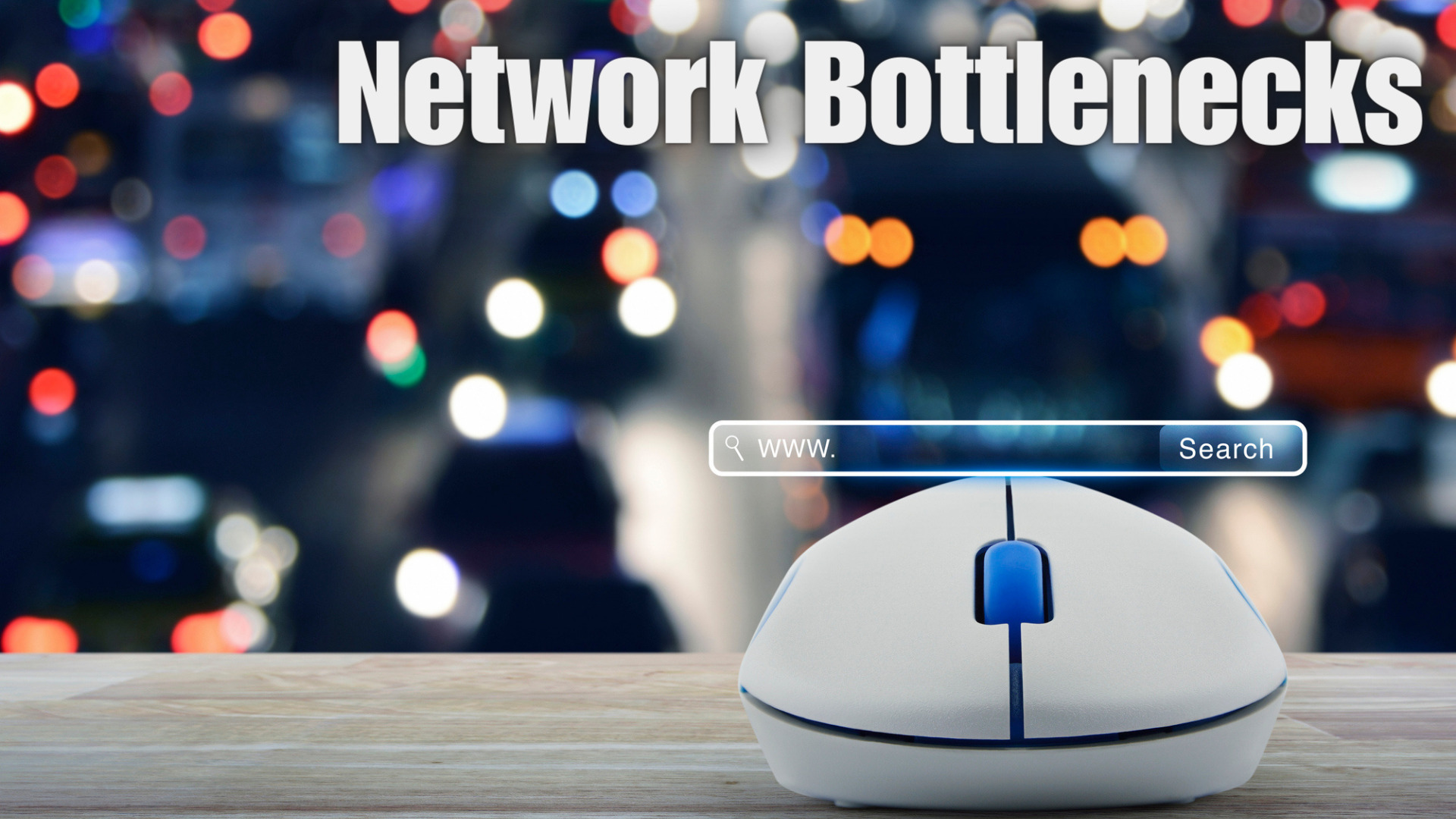Network Bottlenecks: Identifying and Addressing Key Issues
Network bottlenecks can be a frustrating and complex issue to resolve. They occur when the data flow within your network is slowed down or interrupted, leading to reduced efficiency and performance. As network complexities increase with technological advances, it is crucial to understand and mitigate these bottlenecks to maintain optimal network functionality.
Identification and addressing of network bottlenecks can be difficult due to the many factors that may contribute. Common causes of bottlenecks may include hardware limitations, improper configuration, or increased traffic. Understanding the impact of these issues is necessary for timely resolution, ensuring minimal disruption to your network.
Key Takeaways
- Network bottlenecks can hinder efficiency and performance, making them crucial to identify and resolve
- A variety of factors contribute to network bottlenecks, from hardware limitations to improper configurations
- Timely mitigation of network bottlenecks minimizes disruption and ensures optimal network functionality
Identifying Network Bottlenecks
Impact of Infrastructure
The network infrastructure plays a vital role in identifying bottlenecks. Your network hardware, including routers, switches, and cables, could be causing performance issues if they’re outdated or not functioning properly. Ensure all components are up to date and performing optimally. Also, consider upgrading to higher-quality hardware if necessary. Network topology is another important factor, as poor layout and design can lead to congestion and slow performance.

Monitoring Metrics
Several key metrics can help you identify network bottlenecks:
- Bandwidth: This is the maximum data transfer capacity of your network. If the bandwidth usage consistently reaches its limits, it might be time to upgrade your connection.
- Latency: The time it takes for a data packet to travel between two endpoints. High latency can lead to network bottlenecks, especially in real-time applications.
- Packet loss: High packet loss indicates that data is not being transmitted reliably across the network, which can cause performance issues.
- Throughput: The actual rate at which data is transferred, measured in bits per second (bps). Monitor throughput levels to determine if your network is experiencing bottlenecks.
You should use the appropriate tools and methodologies to monitor these metrics effectively.
Tools
There are many tools available to help you monitor and identify network bottlenecks. Some popular options include:
- Wireshark: A powerful network protocol analyzer that can help you identify issues by capturing and analyzing network traffic.
- Ping and Traceroute: Basic command-line tools that can help you identify latency and routing issues.
- Network monitoring software: These tools can track performance metrics, device health, and other important network information. Popular options include SolarWinds, PRTG, and Zabbix.
By carefully observing the impact of your infrastructure, monitoring crucial metrics, and using the right tools, you’ll be well-equipped to identify and address network bottlenecks, ensuring smooth network performance.
Common Causes of Bottlenecks
Understanding the common causes of network bottlenecks can help you pinpoint the source of your current networking issue and prevent future occurrences. This section will discuss three typical causes of bottlenecks: insufficient bandwidth, network hardware issues, and poor network configuration.
Insufficient Bandwidth
Insufficient bandwidth is a common cause of network bottlenecks. When your network does not have enough capacity to handle all the traffic, it can lead to slow data transfers and reduced overall performance. To prevent this, you should:
- Monitor your network usage regularly to identify trends and potential bottlenecks.
- Upgrade your internet connection if necessary to provide adequate bandwidth for your business needs.
- Implement bandwidth management tools to prioritize and allocate resources effectively.
Network Hardware Issues
Network hardware issues can also contribute to bottlenecks. Outdated or malfunctioning equipment can slow data transfers and impede overall network performance. Some steps you can take to address hardware issues include:
- Regularly update and replace outdated hardware components such as routers, switches, and access points.
- Monitor the health and performance of your network devices to detect potential issues early.
- Ensure proper ventilation and cooling for network hardware to prevent overheating and subsequent performance degradation.
Poor Network Configuration
A poorly configured network can lead to bottlenecks and other performance problems. Common configuration issues include incorrect settings, misaligned subnets, and improper routing. To optimize your network configuration, consider the following:
- Reviewing and updating your network settings to ensure optimal performance.
- Segmenting your network into smaller, manageable subnets reduces congestion and improves security.
- Implementing proper routing protocols to efficiently direct traffic between network devices.
By addressing these common causes of network bottlenecks, you can improve the efficiency and reliability of your network, ensuring that your business runs smoothly and without interruption.
Impact of Network Bottlenecks
Reduced Performance
Network bottlenecks can significantly impact your system’s performance. When data flow is congested or limited, it can result in slower response times and reduced efficiency in your network. As a result, you may experience:
- Increased latency: Delays in data transmission can slow down your applications and services, particularly when dealing with real-time communications or high-bandwidth applications.
- Limited throughput: A bottleneck can limit the amount of data your network can handle, effectively reducing its overall capacity and potentially causing a decline in the quality of service for your users.
Loss of Data and Connectivity
Network bottlenecks can also lead to the loss of data and connectivity. When your network cannot efficiently handle traffic, it can result in:
- Dropped packets: As the network becomes congested, packets may be dropped, leading to data loss and the need for retransmission.
- High packet loss rate: A consistently high packet loss rate can affect the reliability of your network and its services, with users experiencing intermittent connectivity issues and disruptions in service.
Identifying and addressing network bottlenecks is crucial to maintain optimal performance and prevent data loss and connectivity issues. By monitoring your network and employing effective troubleshooting techniques, you can help ensure that your network remains efficient, reliable, and secure.
Mitigation Strategies
Optimizing Network Infrastructure
To alleviate network bottlenecks, it is crucial to optimize your network infrastructure. Ensure sufficient bandwidth and that all network components, such as switches and routers, are scalable and in good condition. Also, consider upgrading to newer technologies like Gigabit Ethernet and implementing fiber-optic connections to increase data transfer speeds and decrease latency.
Implementing Quality-of-Service Policies
Implementing Quality-of-Service (QoS) policies is another important strategy for addressing network bottlenecks. QoS policies prioritize specific types of network data, ensuring that high-priority data is transmitted first. This can be particularly useful for time-sensitive applications like video conferencing. You can use traffic-shaping techniques like bandwidth allocation and rate limiting to implement this. Regularly review and adjust your QoS policies based on your network’s changing needs.
Regular Maintenance and Monitoring
Lastly, to manage network bottlenecks, establish a routine for regular network maintenance and monitoring. This involves updating firmware and software on networking devices, ensuring that your hardware functions optimally, and monitoring traffic patterns. Utilize network monitoring tools to detect anomalies, monitor utilization levels, and troubleshoot potential issues before they become significant bottlenecks. Foster a proactive approach to network management, addressing problems early on and minimizing the likelihood of bottlenecks occurring in the first place.
Frequently Asked Questions
What causes network congestion?
Network congestion occurs when the demand for data transmission exceeds the available capacity of a network. Common causes include insufficient bandwidth, poorly configured routers or switches, and inefficient routing algorithms. Additionally, a sudden increase in network usage or heavy traffic from a single user can cause congestion.
How do you identify and troubleshoot network bottlenecks?
You need to monitor and analyze the overall network performance to identify bottlenecks. Look for high-latency areas, packet loss, and slow data transfers. When troubleshooting, first isolate the problem by checking components such as routers, switches, and firewalls. Then, verify configurations and routing protocols and address potential hardware issues.
What tools can be used to analyze network performance?
Various tools are available to help you analyze network performance and identify bottlenecks. These include:
- Network monitoring tools like PRTG, Nagios, or SolarWinds
- Packet analyzers like Wireshark
- Network topology mapping and visualization tools
Ensure to choose a tool that meets your specific needs and network size.
How does a bandwidth bottleneck impact network efficiency?
A bandwidth bottleneck is a limited bandwidth that affects the network’s ability to process and transport data. This leads to slower data transfers, reduced network efficiency, and decreased user productivity. In severe cases, it may cause applications to become unresponsive or even lead to network downtime.
What is the difference between a network bottleneck and latency?
A network bottleneck is a point where the data flow is restricted, leading to congestion and slow performance. Latency, on the other hand, refers to the time delay in data transmission over the network. While latency can result from a network bottleneck, it can also be caused by factors such as physical distance and network communication protocols.
What are the best practices for avoiding network bottlenecks?
To avoid network bottlenecks, consider the following best practices:
- Assess your network’s capacity and ensure adequate bandwidth for your requirements.
- Implement Quality of Service (QoS) policies to prioritize essential traffic.
- Regularly monitor network performance to identify potential issues before they escalate.
- Optimize routing and switching configurations to improve throughput.
- Upgrade network hardware and infrastructure components when necessary.
- Train and educate users about proper network usage to avoid overloading the system.








